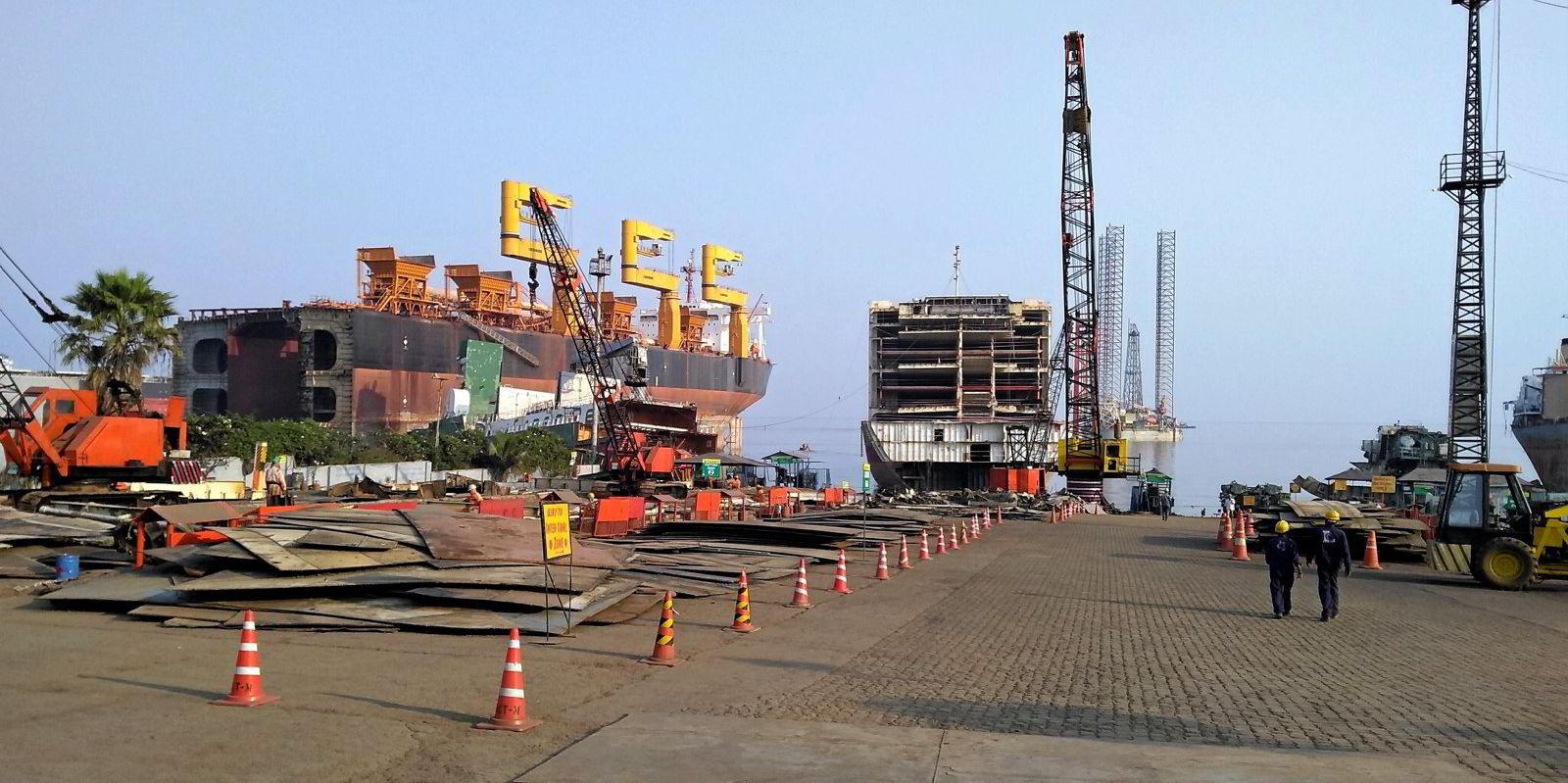The International Maritime Organization’s incoming Carbon Intensity Indicator (CII) could leave the VLCC orderbook looking a little thin, according to valuation platform VesselsValue.
The London company launches a new CII estimating tool for shipowners on Tuesday and has been crunching the numbers on how the decarbonisation measure will affect the fleet.
“Almost all owners are currently weighing the impact of CII on their existing fleets,” Simon Rowse, head of modelling and data science at VesselsValue, told TradeWinds.
Rowse, who led the development of the new tool, said CII will remove capacity in two ways: forced slow-steaming to comply, and more recycling of those vessels that cannot.
“Taking VLCCs, as an example, we see that if all vessels needed to become compliant today, then the equivalent of six vessels’ worth of annual tonne-miles will be removed through slowing down,” he said.
“And a further nine vessels will become candidates for demolition, therefore requiring an additional 15 vessels to enter the fleet to maintain the current tonne-mile supply,” Rowse added.
This would increase the size of the current order book by 33%, he calculated, following a dearth of orders in recent years.
The regulations will enter into force on 1 January 2023.
Rowse believes sanctions will need to tighten significantly to achieve the IMO’s target of net-zero shipping by 2050.
“There is a real risk here of being left behind,” he warned.
Earning power to plunge
“Inefficient vessels, or those being operated inefficiently, are likely to see their earning power reduce dramatically, and therefore their values decrease significantly as these regulations come into force and tighten over time,” Rowse told TradeWinds.
“We may also very quickly see an impact in the financing of such vessels if their useful life is expected to be curtailed by these regulations,” he said.
Rowse believes owners can now, for the first time, start to understand the extent to which each sector will be affected.
“We are helping organisations understand the extent to which each shipping sector will be impacted by the imminent and ongoing introduction of environmental regulation,” he added.
CII is a measure of carbon emissions to capacity miles.
Live ratings in bands A to E
The VesselsValue module estimates annual efficiency ratios for the previous three full calendar years, for almost every vessel above 500 gt in the cargo fleet.
Owners will be able to check live ratings in the CII bands from A to E, a value which updates every time the vessel stops.
They can also estimate the limited engine power and reduced reference speed to bring a non-compliant vessel into Energy Efficiency Existing Index compliance.
The calculation is performed with zero user-data submission and is based on the company’s AIS trade module and extensive vessel database.





